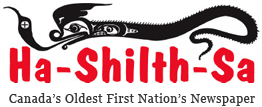Fresh ingredients, homestyle cooking featured at roadside food truck Tom’s Kitchen
Homestyle food that elicits memories of grandma’s kitchen – that’s what Hupacasath’s Tom Tatoosh aims for in his newly launched food truck business, and he is quickly gaining word-of-mouth promotion thanks to his delicious menu offerings.
Besides the standard food truck staples like burgers and fries, Tatoosh offers First Nations favorites like fried bread, fish soup and his cheeky ‘hangover soup’ which he says is a hamburger/vegetable combination. He also offers house chili, hot dogs and homestyle burgers served with a grilled slice of pineapple.
